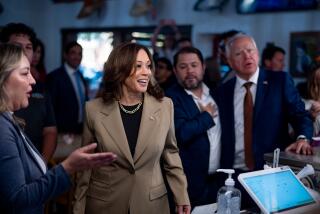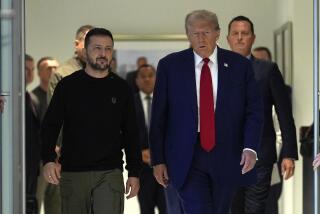News Analysis: Ukraine crisis gives Kamala Harris a new role
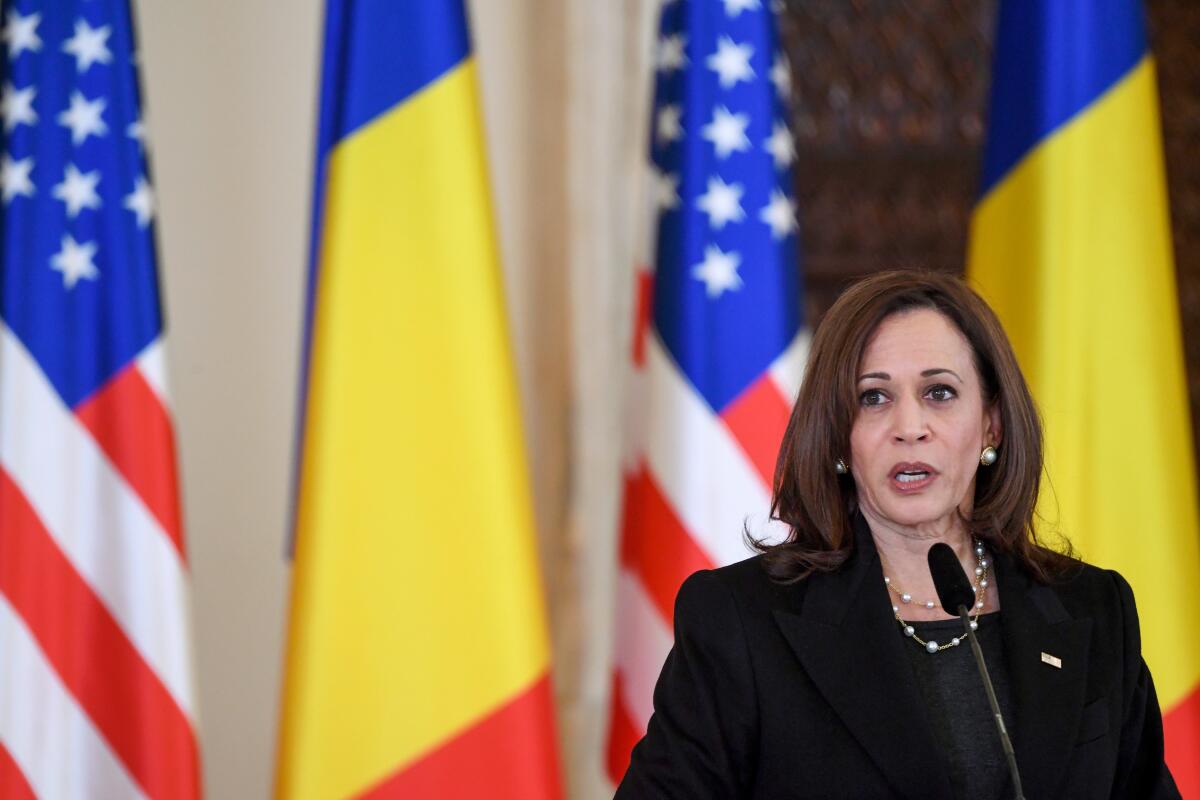
- Share via
WARSAW — It was partly coincidence that Vice President Kamala Harris was in Poland, meeting with leaders and speaking with refugees on Thursday, the same day that Canadian Prime Minister Justin Trudeau had roughly the same itinerary here.
But it’s also an indication that she had arrived near the center of a crisis that is absorbing the world’s attention.
Russia’s invasion of Ukraine has turned Harris, a relative rookie in foreign affairs, into one of the administration’s leading diplomatic faces during its most dangerous foreign crisis.
Last month, as Russian troops menacingly surrounded Ukraine’s borders, Harris met with European allies and Ukrainian President Volodymyr Zelensky at a security conference in Germany. This week, she became the highest-ranking American official to visit Eastern Europe since Moscow launched its attack on Feb. 24. Her three-day journey was aimed at showing solidarity with Poland and Romania, vulnerable allies facing a Ukrainian refugee crisis as they seek to bolster defenses against a potential Russian attack.
It’s a traditional role for vice presidents, making urgent trips abroad in the president’s stead. Joe Biden, the oldest president in history at 79, has traveled abroad less than his predecessors. Sending him near the border with Ukraine could be seen as provocative and logistically disruptive for countries dealing with an influx of refugees.
It’s a relatively new role for Harris, who last year traveled overseas infrequently because of concerns about COVID-19 and the administration’s focus on its domestic agenda. The crisis in Europe could also shift scrutiny away from Harris’ other main foreign policy portfolio — the difficult job of curbing migration from Central America.
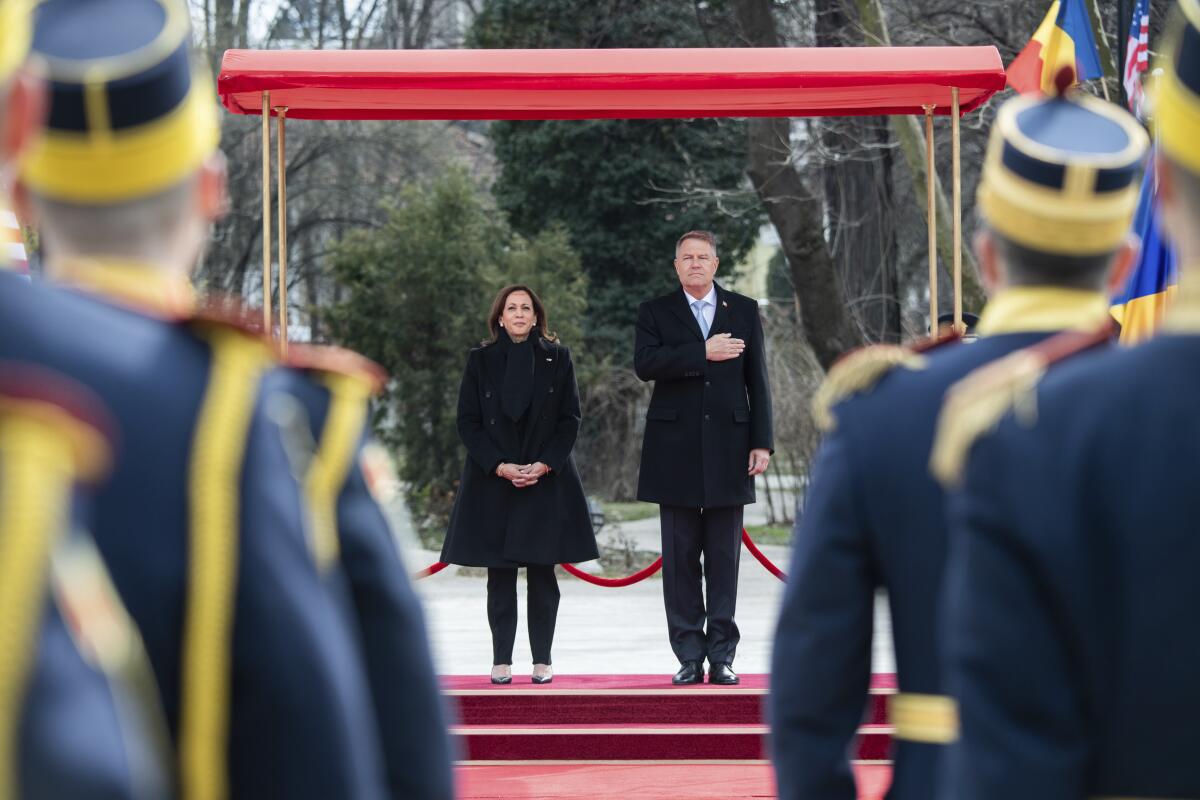
Her task in Europe appeared mostly symbolic — reinforcing American support for NATO and warning Russian President Vladimir Putin that the U.S. will deploy troops if he attacks a member of the 30-country alliance.
In addition to meeting with Polish President Andrzej Duda on Thursday, she visited Polish and American troops and spoke with Ukrainian embassy staffers who are now working from Warsaw and met with a small group of displaced Ukrainians. On Friday, she flew to Bucharest and held meetings with Romanian President Klaus Iohannis.
At each stop, she delivered a consistent message: “An attack against one is an attack against all,” she told about 40 Polish and American troops inside an airport hangar in Warsaw on Friday. Later, in Bucharest, she repeated that mantra. “We are firm in our commitment,” she said.
Rick Stengel, an undersecretary of State in the Obama administration, said there was “nothing magical” about Harris’ role, including the repetition.
“Diplomacy is very traditional, and when you send the second-highest-ranking official in the U.S. government someplace, you’re telling them, ‘Hey, we care about you,’” he said. “A lot of diplomacy is symbolism, and this is important symbolism.”
Polish and Romanian leaders are eager for such attention. The countries, relatively recent additions to the North Atlantic Treaty Organization and former Soviet satellites, would probably be on the front lines of any attacks by Russia.
“Romania has approximately 650 kilometers [400 miles] of land border with Ukraine. It’s the longest land border of all allies neighboring with Ukraine,” Iohannis said through an interpreter during a Friday news conference with Harris, in which he asked for more military and humanitarian help. “So, yes, we are concerned.”
Biden administration officials have sought to head off thorny diplomatic situations for Harris, who likes to engage in near-obsessive preparation before meetings and generally stays on script.
For example, officials made a series of definitive public statements in the hours before Harris landed in Warsaw on Wednesday night to defuse a dispute with Poland over how and whether to supply Polish fighter jets to Ukraine. Duda wanted the U.S. to deliver the planes, but the White House balked. U.S. officials were worried that getting the planes into Ukraine could escalate the fight with Putin.
A senior administration official, who briefed reporters on condition of anonymity, said the fighter jet dispute came up when Harris met with Duda privately. But making the U.S. position clear beforehand allowed the two leaders to quickly move on to other subjects, the official said.
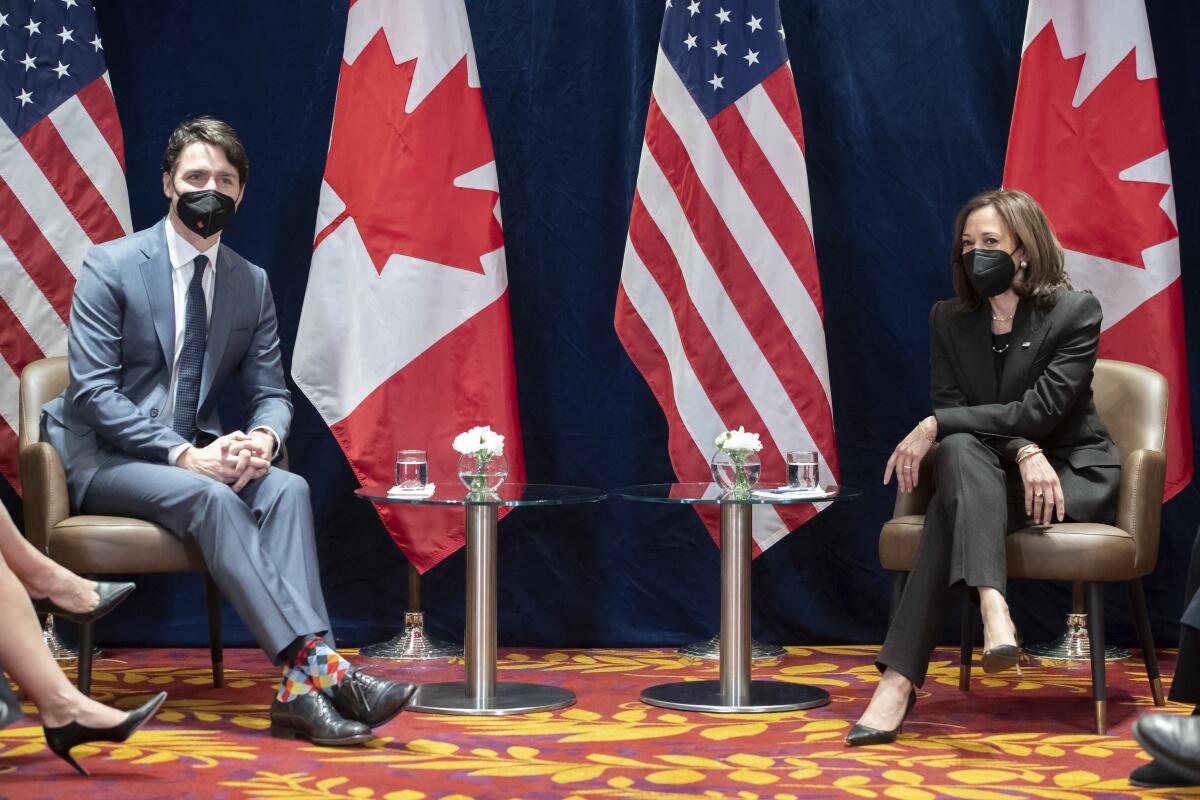
Harris, however, appeared unprepared for Duda’s biggest request: allowing Ukrainians with American relatives to stay in the U.S. until the war ends. In a news conference with Duda, Harris emphasized other measures the administration was taking to help Ukrainians, including allowing those already in the U.S. to stay on expired visas. But she did not say what, if anything, the administration would do to address Duda’s appeal.
The administration official said Harris’ diplomatic role on Ukraine dates to November, when she traveled to Paris to meet with French President Emmanuel Macron. The two discussed a joint response to early signs of Russian troop movement. The official said Harris spoke with five prime ministers from Eastern Europe last week and expects to continue to engage with allies.
Daniel Fried, a veteran U.S. diplomat and former ambassador to Poland, said Harris appeared to have successfully executed the trip’s objective: “calming down the situation.”
On the fighter jet issue, her presence sent the message that the U.S. and its allies, though operating under wartime pressure, need to “take a deep breath” and remember that they are going to misspeak at times, Fried said.
He said the trip would also provide Harris needed experience and a real-world feel of a potential hot spot. Vice President George H.W. Bush learned those lessons during a visit to Poland in 1987, just before the collapse of the Iron Curtain, Fried said, adding that such trips are “a good investment.”
As she has traveled abroad more frequently in recent months, Harris has appeared more comfortable on the world stage but is clearly wary of making errors. During the news conference with Duda, she laughed nervously when the two leaders volleyed over who should answer questions first. And in answering questions, she seldom ventured beyond talking points and platitudes.
“I want to be very clear,” she said when asked about the tension over the fighter jets. “The United States and Poland are united in what we have done and are prepared to do to help Ukraine and the people of Ukraine. Full stop.”
Times staff writer Tracy Wilkinson in Washington contributed to this report.
More to Read
Get the L.A. Times Politics newsletter
Deeply reported insights into legislation, politics and policy from Sacramento, Washington and beyond. In your inbox twice per week.
You may occasionally receive promotional content from the Los Angeles Times.


